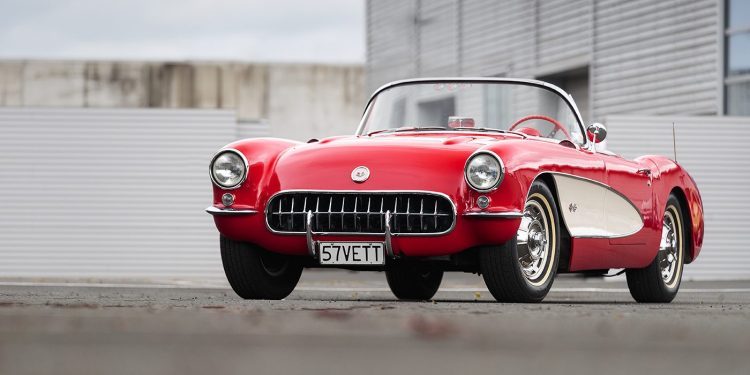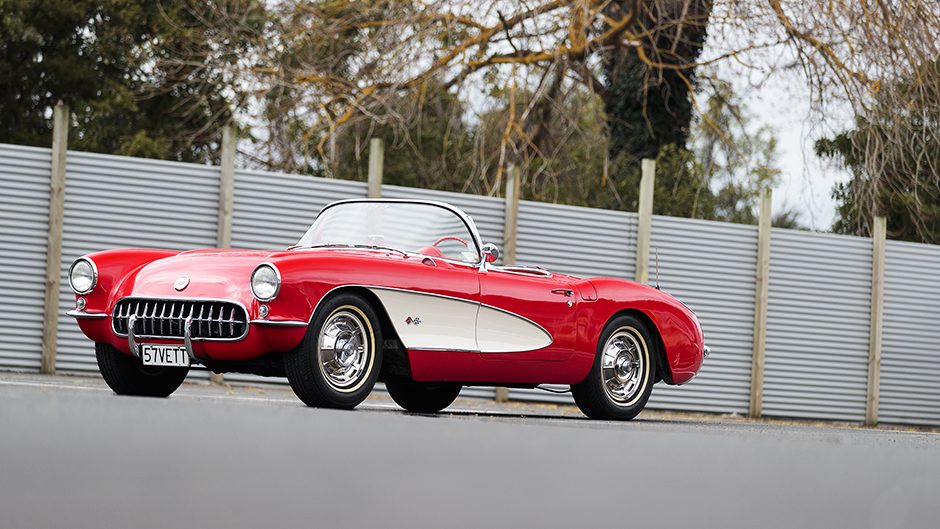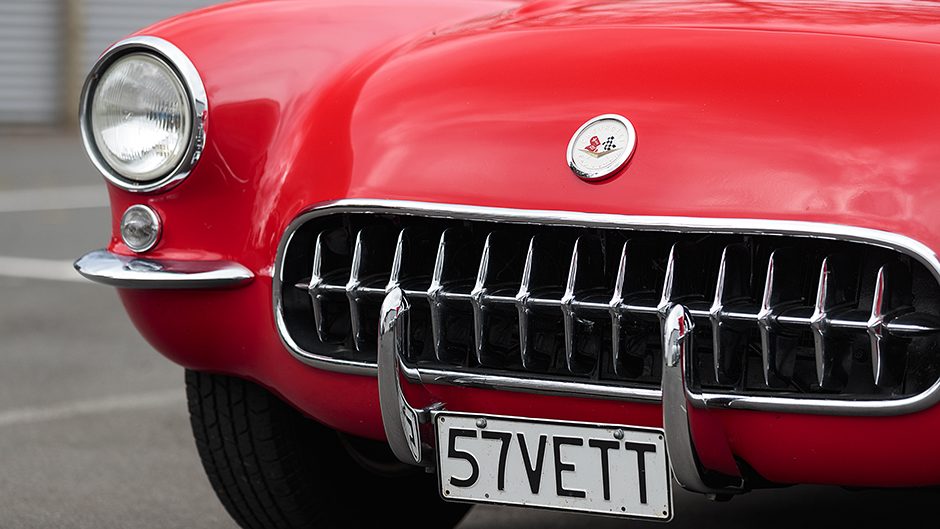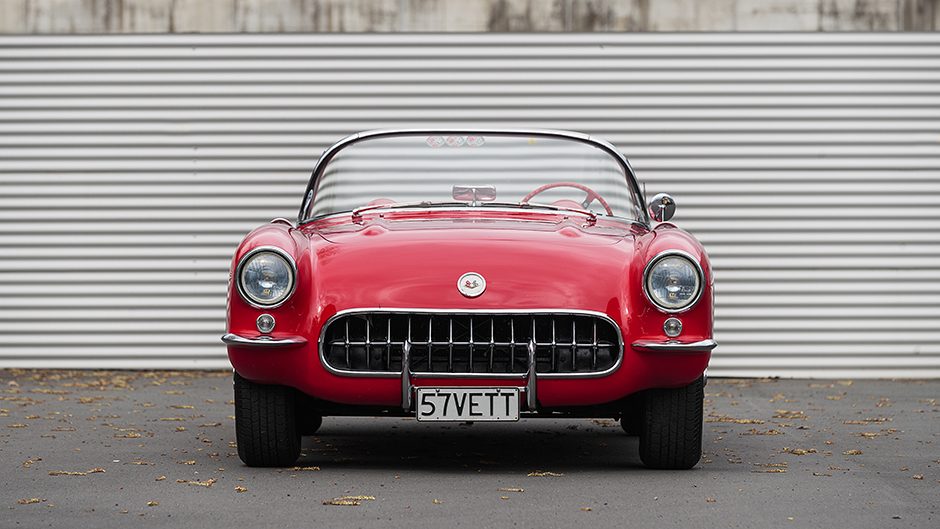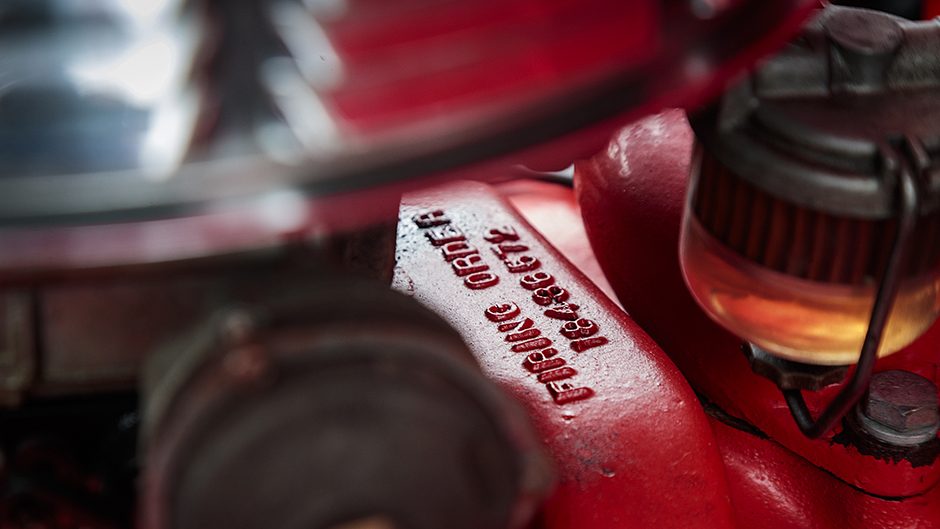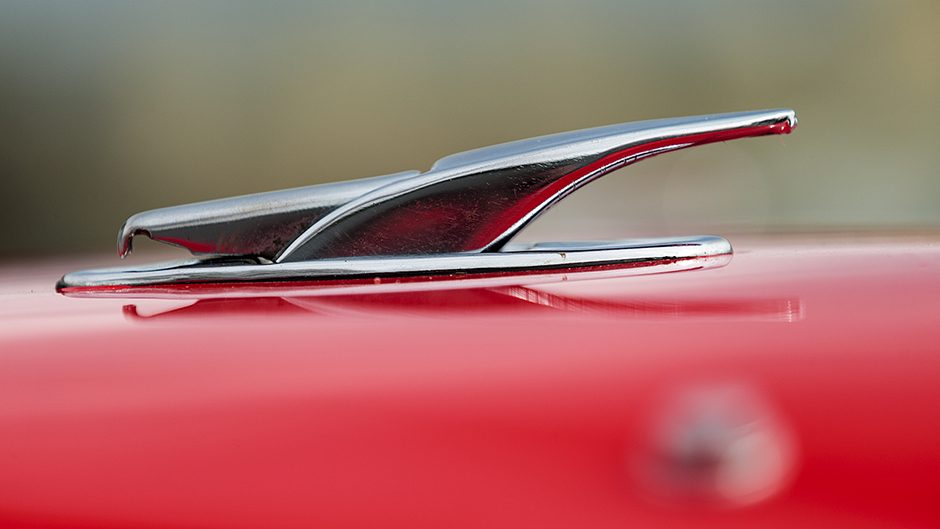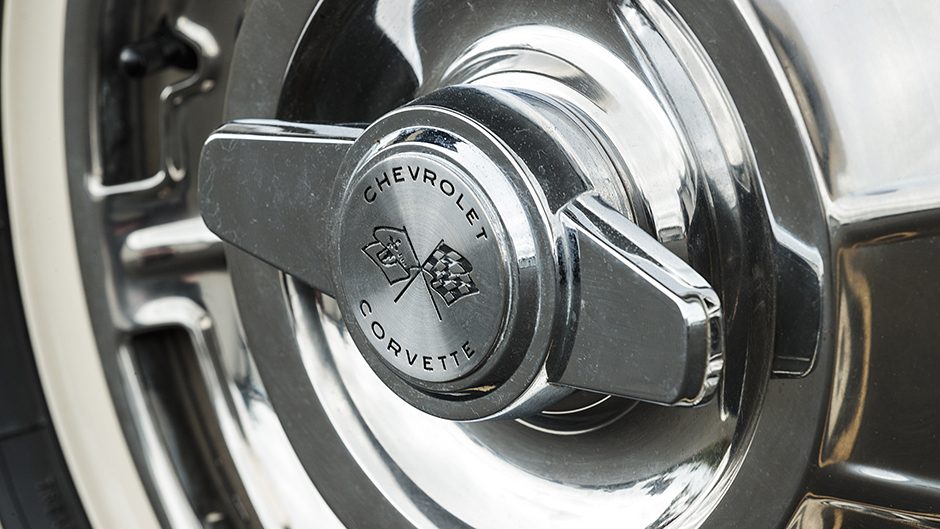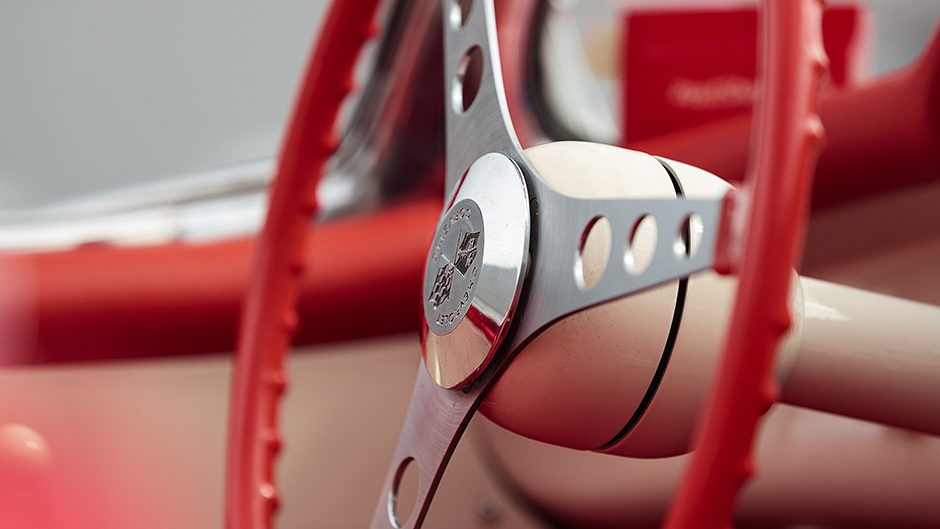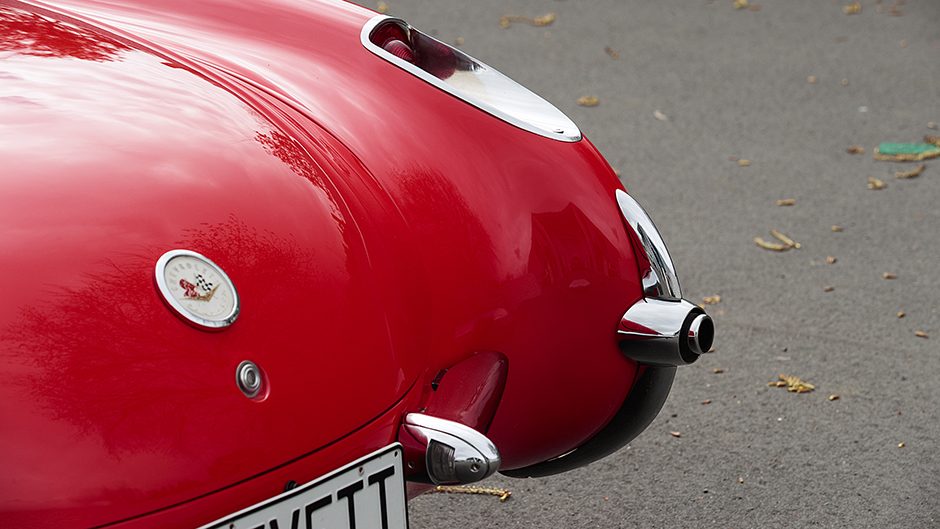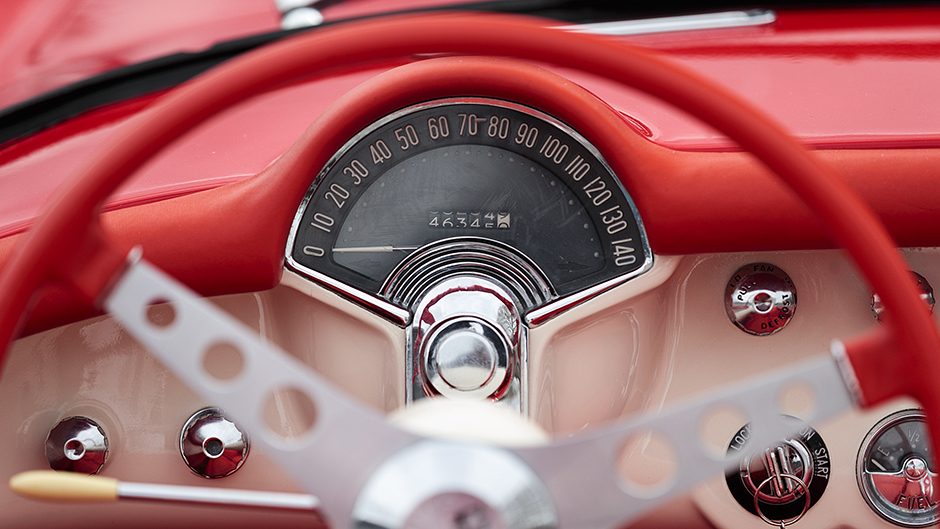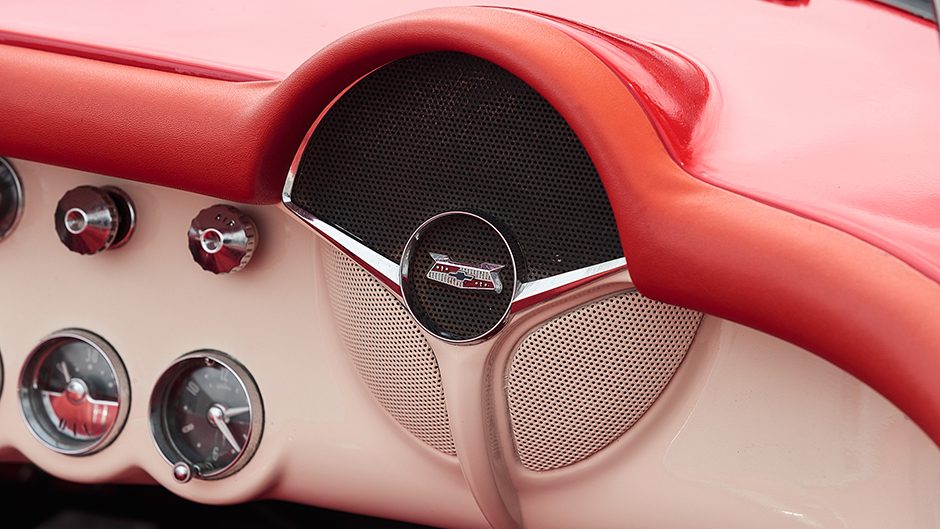1957 Chevrolet Corvette
Words Paul Owen | Photos Tom Gasnier
Of all the hundreds of cars in Hamilton’s Classics museum, this 1957 Corvette is probably the one that founder, Tom Andrews, would save first if there was ever a fire. We find out why.
Little Red Corvette, Baby you’re much too fast, Little Red Corvette, You need a love that’s going to last
The late, great Prince was singing about a one-night-stand with a promiscuous woman when he wrote these lyrics back in 1982, but we all know that humans can fall in love with cars too. And there’s no doubt about the strong bond between Tom Andrews, founder of the Classics Museum in Hamilton, and this red 1957 Corvette, which he confesses is the car that he’d rescue first if the museum building ever caught fire (perish the thought).
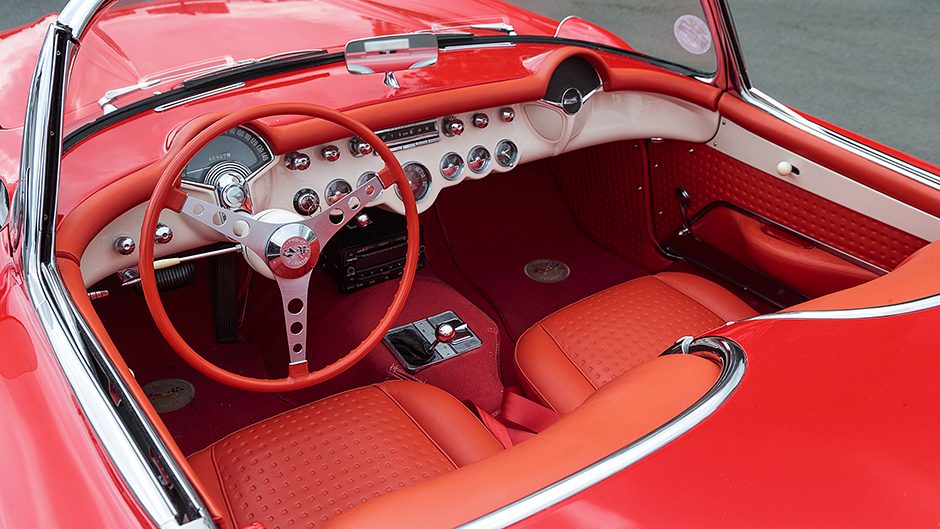
For Tom also had a model of this car parked on a table beside his bed for years before he finally found and bought the real thing. The red ’57 is not the fastest Corvette that he’s ever owned – that’d be either the red 1970 model with the massive 454 cubic-inch V8 engine, or the black 1972 LT1 that used to hit the track with Robin Porter at the wheel. Those two faster ‘vettes were the only cars that Tom has ever sold out of the hundreds that he has bought.
“I got old and slowed right down, and sold them back in the 1990s. “I didn’t want to sell them but got talked into it”. A few years later, Tom was in Seattle and saw an ad for this ’57, on sale in the middle of the US. He immediately jumped on a plane, and found the one-owner car, painted blue, being sold by a lawyer as part of a deceased estate. “Evidently, a young couple had left Germany after WWII, and it had been her car. “She’d died, and the lawyer was going to send the money from the sale back to her relatives in Germany. “I looked in the back, and there was the original owner’s handbook, and invoices for every part that had ever been changed during her ownership. “There was also an invoice for painting the car from red to blue. It was a one-owner car with 25,000 miles on it, and it had never been knocked around. “I knew what I was looking at – the lawyer was asking $US30,000 – so I gave him $US35,000.”
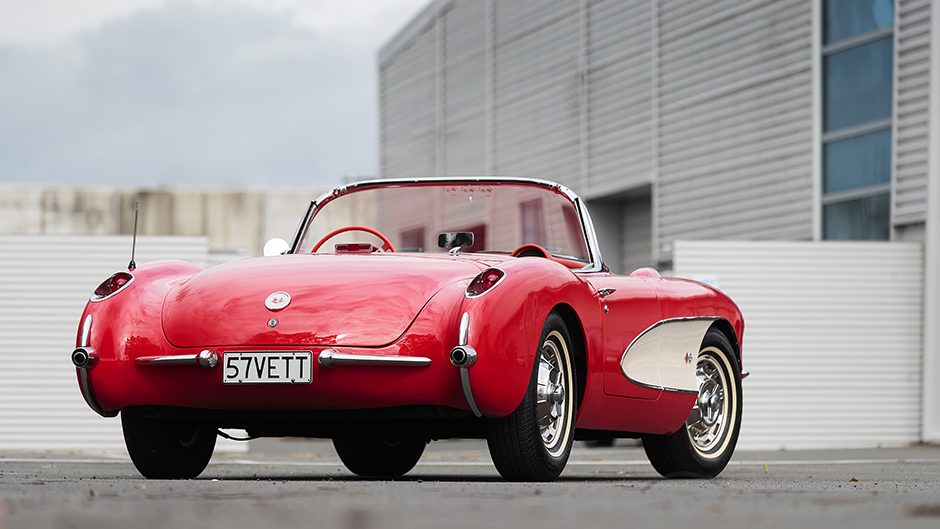
After shipping the car back to New Zealand, it became Tom’s daily driver for the next five years. He then pulled it apart more than a decade ago and restored it, including changing the colour back to the original Venetian Red. “I could tell the motor had never been out when I pulled it apart. “Since then, it’s always been a good running car, and it always starts first pop.”
Perhaps one reason the car fires up so readily is that 1957 is the year that the 283 cubic-inch V8 gained fuel injection. This was the final piece in the mechanical jigsaw that would establish the formula for a real Corvette. Other essentials came first, like the fibreglass body that dressed the Corvette for its debut back in 1953.
That ’53 was little more than a show pony, however. It was an ordinary ‘Blue Flame’ six-cylinder-powered Chev wearing a quickly moulded composite body to hide its family car origins. Chevrolet didn’t even bother with exterior door handles. Nor did it have proper side windows, just some clumsy-to-use curtains instead. You could have any transmission you wanted, so long as it was GM’s less-than-reliable ‘Turboglide’ two-stage automatic.
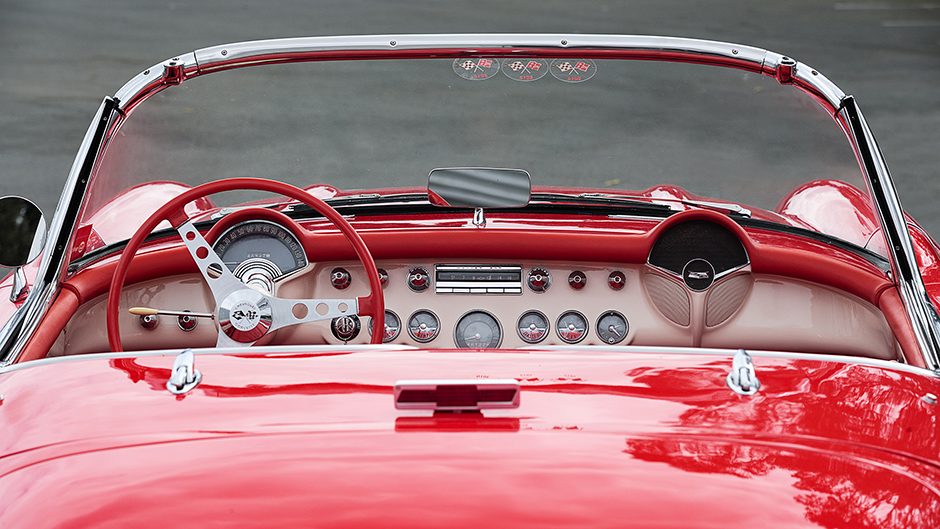
This quickly cobbled-together car was intended primarily as a motor show hit job, a little flexing of Chevrolet’s design muscle to create a bit of buzz with a limited production run thereafter.
The benchmark Jaguar XK120 could rest easy that the original ‘vette was no challenger to its hot-poop sportscar crown. This was proved by the sales numbers for the 1954 Corvette in its first full production year. Of the 3642 Corvettes it made that year, Chevrolet would only find buyers for 2780.
So there were quite a few GM board members preparing to bring the axe down on the Corvette during its early years. But thanks to a small enclave of Corvette enthusiasts within the management team, the model would go on to become the car within the vast GM world that young designers and engineers wanted to work on most. Some of these included design boss, Harley Earl, Bill Mitchell his 2IC and eventual successor, and a fiery young engineer of Russian birth, Zora Arkus-Duntov.
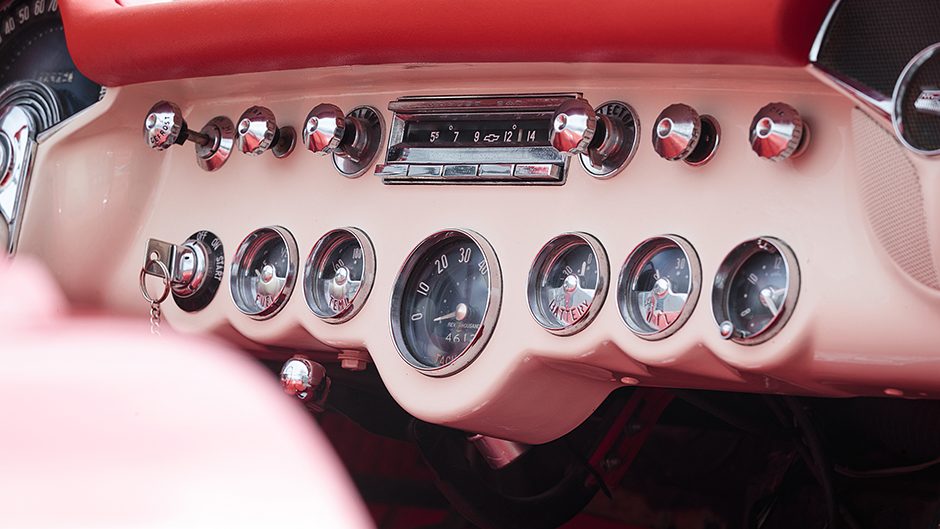
It was possibly the passionately-penned memo that Arkus-Duntov wrote to GM’s chief engineer, Ed Cole, and R&D development chief, Maurice Olley, late in 1953 that persuaded Chevrolet to continue the development of the Corvette. In it, Arkus-Duntov said that Chevrolet would damage its reputation if the division cancelled the car, especially amongst younger buyers. He proposed that a properly-developed Corvette would be a great image-builder for the brand, and encourage a higher level of brand loyalty from customers. It’s thanks to the arguments of this Russian-American innovator that we have the welcome paradox of GM’s most affordable family car brand building the corporation’s most aspirational and desirable performance car.
GM finally had a decent V8 engine to slot beneath the bonnet of the 1955 Corvette – the new 265 cubic-inch short-block – and Arkus-Duntov ensured that there was also a decent manual gearbox to be mated to it. The following year, 1956, the Corvette got the roll-up windows and exterior door handles that the car always deserved. Engine outputs now stretched to 179kW, and the lightweight Chevrolet could finally earn grudging respect from sportscar purists.
Then came that final finishing touch a further year later – fuel injection, along with a capacity hike for the V8 to 283 cubic inches. The ‘Ram-Jet’ port injection system might have been rudimentary in its design and the use of electronic control units and drive-by-wire throttles was still decades away, but it did make the injected Chevy V8 arguably the most advanced engine of its day. Chrysler’s optional dual quad-barrel carb Hemi V8 for the 300B might have beaten the injected 283 to the one-horsepower-per-cubic-inch bragging rights the previous year (1956), but Chevy’s injected 283, when slotted into a far lighter sportscar like the ’57 Corvette, created what was then the world’s quickest-accelerating production car.
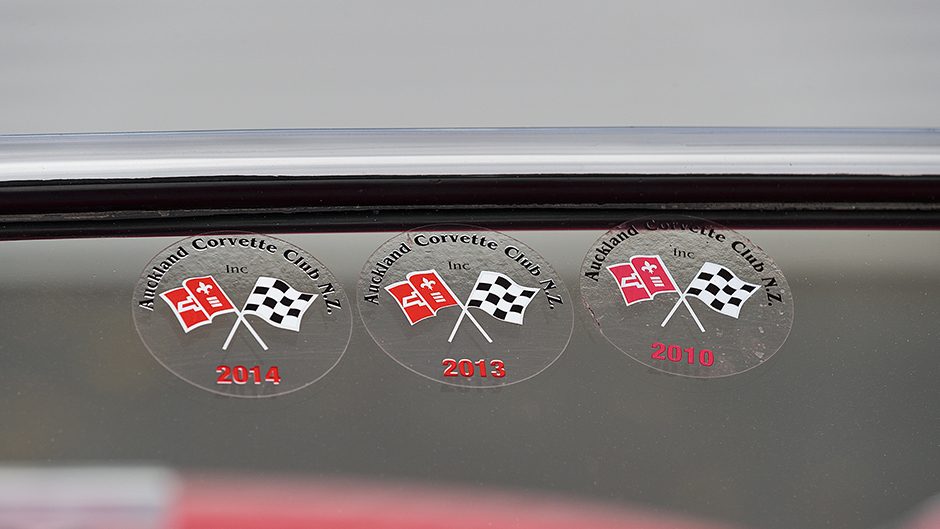
What’s more, the compact design and thin-walled, lightweight cylinder block of the 283 created a template for a ‘short-block’ American V8 engine that would be faithfully copied by other manufacturers for decades. But it was the continuous port fuel injection that really captured the market’s attention. Only the direct-injection inline six-cylinder engine of a Mercedes-Benz 300SL could match the injected ’57 Corvette’s ability to sip at a rate of 20 miles-per-US-gallon, and the Chev could easily show the Merc a clean set of rear wheels in any display of acceleration.
When Road and Track magazine first tested the injected ’57 Corvette, they found it could rip through the 0-60mph run in 5.7 seconds (300SL: 7.7 secs), and cut out a standing quarter-mile sprint in 14.3 (300SL: 16 secs). These are still respectable numbers sixty years later.
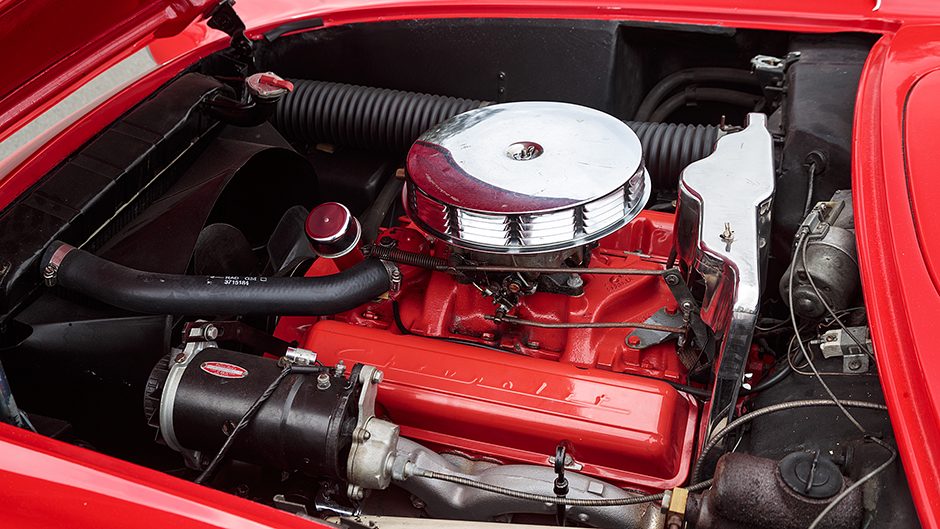
Although manufactured by Rochester and branded as such, the mechanical injection system was actually designed and developed by a GM engineering team under the close observation of Arkus-Duntov and Cole. As well as increasing fuel efficiency, the system also improved throttle response right through the 7000rpm range of the V8. But did the refinement, fuel use, and performance benefits stack up? For the optional Rochester fuel injection system was expensive, commanding a $US550 premium, and many small-town mechanics were befuddled by its complexity and encouraged Corvette owners with faulty fuelling to fit carbs instead. In the ’57 Corvette’s case, the carbureted version used a dual four-barrel setup like the Chrysler Hemi, and developed 13 less horsepower for a total of 270.
Chevrolet eventually ironed out all of the Rochester system’s quirks, and the system was relatively simple to maintain if GM guidelines were followed. But it was possibly the banning of fuel injection by NASCAR in April 1957 that saw further development interest wane. That made fuel injection less viable for the family-sized sedans raced in NASCAR, leaving the handful of optioned-up Corvettes made each year to wave the injection flag. By the middle of 1965, even the C2-generation Corvettes would regress back to carbs when the big-block V8s took over, although many consider the last 327 cubic-inch short-block ‘fuellie’ to be the finest engine ever fitted to a C2.
The fuel-injection saga is just one of the things that makes this ‘little red Corvette’ special. There’s also the hand of Harley Earl, guiding the design of the car, bringing to it his trademark classical stance, elegant lines, and proportions. The end result is an ‘American Beauty’ in both design and technology. Little wonder then that it’s the car that the museum’s founder would rescue first.


